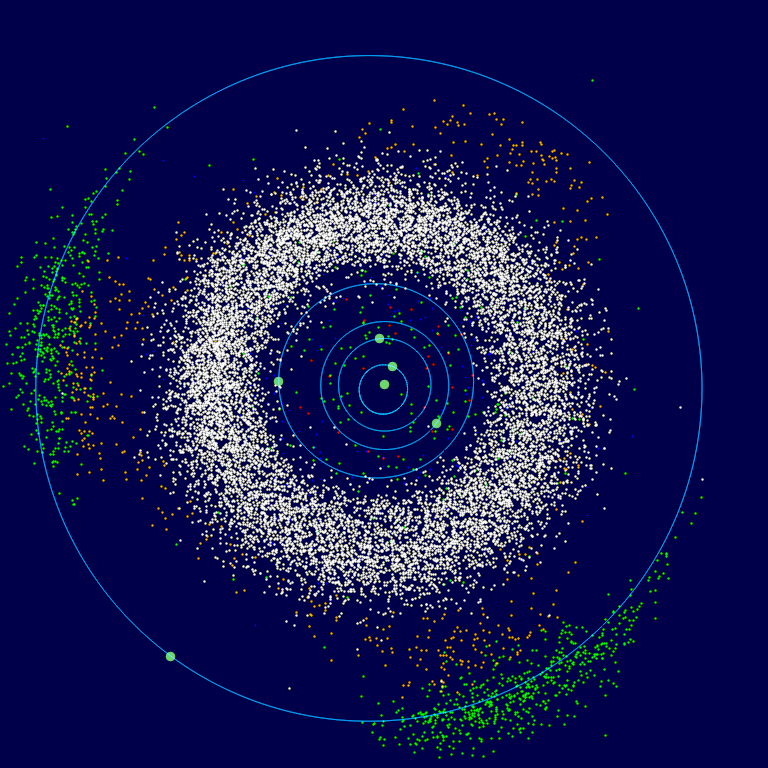
The asteroid belt is an enormous region of space between the orbits of Mars and Jupiter. It contains millions of rocky bodies ranging in size from small particles to large asteroids. For centuries, astronomers have been looking for planets there, sometimes mistaking large asteroids like Ceres, Vesta, and Pallas for planets. In the end, though, no real planet was ever discovered in this area.
One of the prevailing theories on why a planet did not form in the asteroid belt is that Jupiter’s gravitational influence prevented it from happening. Jupiter is by far the largest planet in our solar system. Its gravity was strong enough to capture many of the asteroids that would have otherwise formed a planet, scattering them throughout the region. What’s left in the belt contains only about 4 percent of the Moon’s mass in asteroids, or less than a thousandth of Earth’s mass. The belt is simply too small to form a planet.
Another contributing factor is the distance of the region from the Sun. The asteroid belt is located at a distance where the solar winds, which push against dust and gas particles and compress them to form a planet, are weaker. Therefore, the material in the asteroid belt could not come together to form a planet, and instead, remained as smaller bodies.
In conclusion, the absence of a planet in the asteroid belt is primarily due to the disruptive influence of Jupiter’s gravity, combined with the low total mass of the belt and its distance from the Sun. However, further study of the asteroid belt is still important for a better understanding of the formation and evolution of our enigmatic solar system.
Sources: